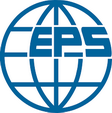Impact sodium salts on colloidal and rheological characteristics of nanosilica/water/electrolyte system
DOI:
https://doi.org/10.15330/pcss.26.1.84-90Keywords:
fumed nanosilica, elecrtolyte, aqueous suspension, zeta potential, particle size distributionAbstract
The influence of sodium salts (chlorides, iodides, nitrates) on the behavior of nanosilica particles in aqueous medium was studied. The dependences of key physicochemical characteristics of the nanosilica/water/electrolyte colloidal system (zeta potential, particle size distribution, rheological characteristics) on the electrolyte and solid phase contents were determined. The zeta potential for all the systems is not below -20 V. As the salt concentration varies, there is a decrease in the ζ modulus approaching zero. It has been revealed that the adsorption and ion exchange processes due to the interaction of Na+ with a nanosilica surface can alter the system's behavior at electrolyte concentrations of 0.001-0.1 M, which manifested in the coagulation of primary nanoparticles and the peptization of agglomerates. The presence of sodium salts leads to additional structuring of the solvent and an increase in the viscosity. The highest viscosity for concentrated silica suspensions in the presence of NaI correlates to the data on an increase in the hydrodynamic radius of aggregates in low-concentration nanosilica suspensions. In the presence of sodium nitrate, silica suspensions show the lowest viscosity. In the colloidal system with nanosilica/water/electrolyte, when the solid phase concentration exceeds 7.5 wt.% and is influenced by sodium chloride and iodide, the rheopexy becomes evident after just three days of storage.
References
R. K. Iler, The Chemistry of Silica (NY, Wiley Interscience, 1979).
A. A. Chuiko (Ed.) Medical Chemistry and Clinical Application of Silicon Dioxide (Kiev, Nauk. Dumka, 2001) (in Russian).
V. M. Gunko, L. S. Andriyko, V. I. Zarko, A. I. Marynin, V. V. Olishevskiy, W. Janusz, Effects of dissolved metal chlorides on the behavior of Silica nanoparticles in aqueous media, Central European J. Chem, 12(4), 480, (2014); https://doi.org/10.2478/s11532-013-0386-1.
R. J. Hunter, Zeta potential in Colloid Science: Principles and Applications (Academic Press, 1981).
M. Kosmulski, Positive electrokinetic charge of silica in the presence of chlorides, J. Colloid Interface Sci, 208(2), 543 (1998); https://doi.org/10.1006/jcis.1998.5859.
J. Lyklema, Fundamentals of Interface and Colloid Science, Vol. 1, (Academic Press, 1991).
C. Pfeiffer, C. Rehbock, D. Hühn, C. Carrillo-Carrion, D. J. de Aberasturi, V. Merk, S. Barcikowski, W.J. Parak, , Interaction of colloidal nanoparticles with their local environment: the (ionic) nanoenvironment around nanoparticles is different from bulk and determines the physico-chemical properties of the nanoparticles, J. R. Soc., Interface, 11(96), 20130931 (2014); ttps://doi.org/10.1098/rsif.2013.0931.
M. Kosmulski, J. B. Rosenholm, High ionic strength electrokinetics, Ad. Colloid Interface Sci, 112(1-3), 93 (2004); https://doi.org/10.1016/j.cis.2004.09.005.
G. V. Franks, Zeta Potentials and Yield Stresses of Silica Suspensions in Concentrated Monovalent Electrolytes: Isoelectric Point Shift and Additional Attraction, J. Colloid Interface Sci, 249 (1), 44 (2002); https://doi.org/10.1006/jcis.2002.8250.
L. S. Аndriyko, V. I. Zarko, А. I. Маrynin, V. V. Olishevskyi, А. А. Кravchenko, Е. M. Demjanenko, Zeta potential and aggregation degree of silica nanoparticles in presents of dissolved metal chlorides in aqueous media, Nanosist. Nanomater. Nanotehnol, 13(3), 389 (2015).
L.S. Andriyko, V.I. Zarko, V.M. Gun’ko, A.I. Marynin, V.V.Olishevskiy, E. Skwarek, Electrical and physical characteristics of silica nanoparticles in aqueous media affected by cations Na+, Ba2+, and Al3+, Adsorpt. Sci. Technol .33(6-8), 601 (2015); https://doi.org/10.1260/0263-6174.33.6-8.601.
M. Kosmulski, Surface Charging and Points of Zero Charge, (CRC Press, Boca Raton, FL, 2009).
S. K. Milonjic L. S. Cerovi, D. M. Cokeša, S. Zec, The influence of cationic impurities in silica on its crystallization and point of zero charge, J. Colloid Interface Sci, 309(1), 115 (2007); https://doi.org/10.1016/j.jcis.2006.12.033.
T. Zuyi, Z. Hongxia, Acidity and alkali metal adsorption on the SiO2-aqueous solution interface, J Colloid Interface Sci, 252(1), 15 (2002); https://doi.org/10.1006/jcis.2002.8277.
V. M. Gun’ko, V. I. Zarko, R. Leboda, E. Chibovski, Aqueous suspension of fumed oxides: particle size distribution and zeta potential, Adv. Colloid Interface Sci, 91(1), 1 (2001); https://doi.org/10.1016/S0001-8686(99)00026-3.
L. Musilová, A. Mráček, V. Kašpárková et al, Effect of Hofmeister Ions on Transport Properties of Aqueous Solutions of Sodium Hyaluronate, J. Mol. Sci, 22(4), 1932 (2021); https://doi.org/10.3390/ijms22041932
Casimiro, C. Weijers, D. Scheepers, Z. Borneman, K. Nijmeijer, Kosmotropes and chaotropes: Specific ion effects to tailor layer-by-layer membrane characteristics and performances, J. Membr. Sc, 672, 121446 (2023); https://doi.org/10.1016/j.memsci.2023.121446.
H.A. Barnes, J. Nonnewton. Thixotropy – a review, Fluid Mech, 70(1-2), 1 (1997); https://doi.org/10.1016/S0377-0257(97)00004-9.
T. van Vliet, J. Lyklema, Rheology. In J. Lyklema (Ed.), Fundamentals of Colloid and Interface Science. Vol. IV: Particulate Colloids (pp. 6.1-6.88) (Elsevier, 2005)
O.V. Goncharuk, L.S. Andriyko, M.L. Malysheva, O.I. Korotychc, A.I. Marynin, V. I. Zarko, A. I. Ukrainets, V. M. Gun’ko. Influence of Indifferent Electrolytes on Formation of Coagulative Structures in Aqueous Silica Dispersions, French-Ukrainian Journal of Chemistry, 5(2), 40 (2017); https://doi.org/10.17721/fujcV5I2P40-48.
M J. Kadhim, M. I. Gamaj, Estimation of the Diffusion Coefficient and Hydrodynamic Radius (Stokes Radius) for Inorganic Ions in Solution Depending on Molar Conductivity as Electro-Analytical Technique-A Review, J. of Chem. Rev, 2(3), 182 (2020); https://doi.org/10.33945/SAMI/JCR.2020.3.5.
Downloads
Published
How to Cite
Issue
Section
License
Copyright (c) 2025 L.S. Andriyko, V.M. Gun’ko, A.I. Marynin, O.V. Goncharuk

This work is licensed under a Creative Commons Attribution 3.0 Unported License.









